
Yvonne Todd, Kushana Bush, John Ward Knox, Peter Madden, candles by Rohan Wealleans, and Greek antiquities
Aotearoa Art Fair 2022
16 November - 20 November

Yvonne Todd
Juniper
2022
C-type print from 4x5 transparency film
1200 x 950 mm
Edition of 3 + 2 artist proofs

Yvonne Todd
Petronella
2022
C-type print from 4x5 transparency film
1200 x 950mm
Edition of 3 + 2 artist proofs
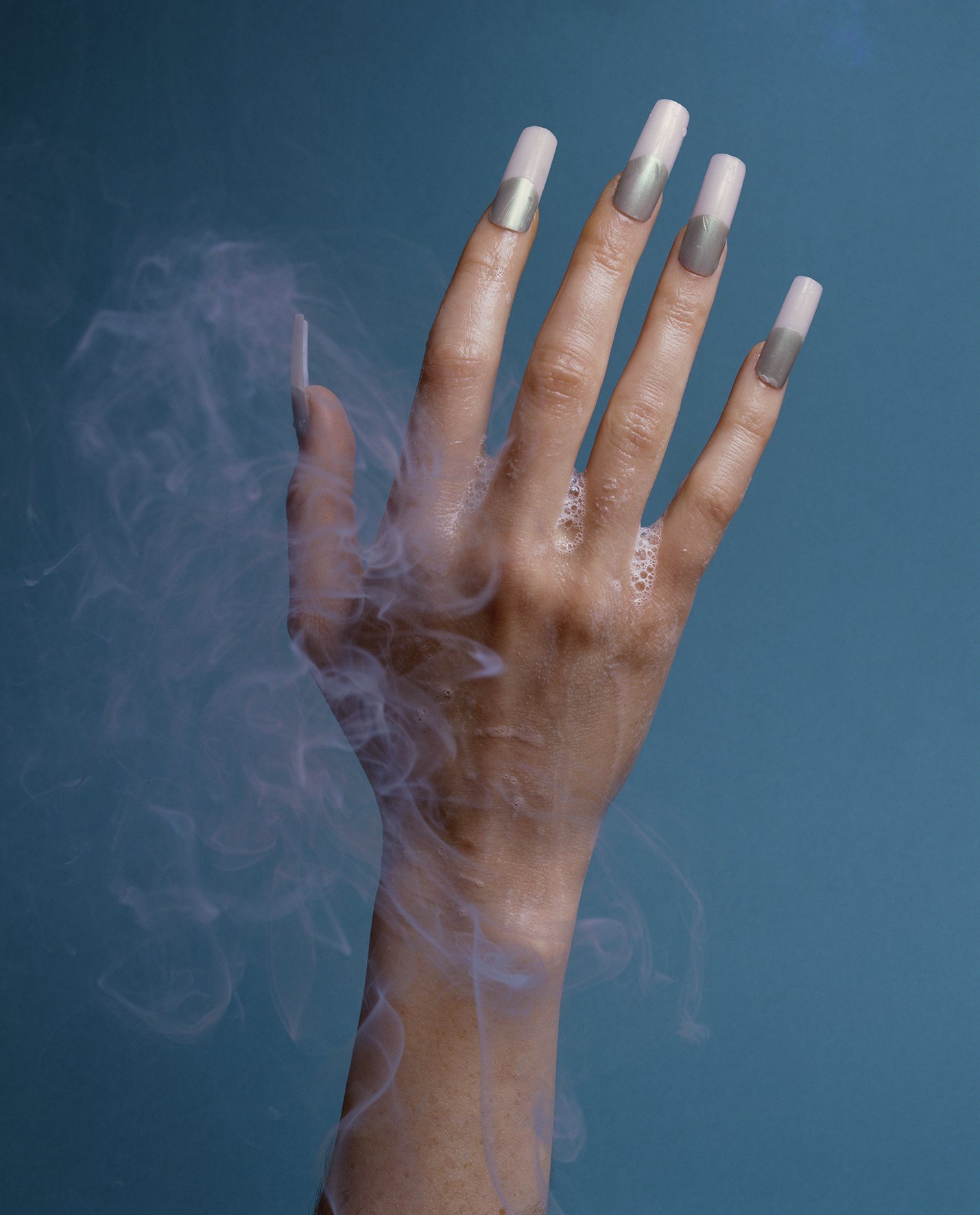
Yvonne Todd
Smoke Soap Hand
2001
C-type print from 120 transparency film
440 x 355mm
Edition of 3 + 2 artist proofs

Yvonne Todd
Sparse flower draped with chain
1999
C-type print from 120 transparency film
440 x 355mm
Edition of 3 + 2 artist proofs

Kushana Bush
Alalagmos
2022
Gouache and watercolour on paper
510 x 590mm (framed)

Kushana Bush
Alalagmos
2022
Gouache and watercolour on paper
510 x 590mm (framed)

Kushana Bush
Geriatric Primate
2022
Gouache and watercolour on paper
510 x 590mm (framed)

Kushana Bush
Geriatric Primate
2022
Gouache and watercolour on paper
510 x 590mm (framed)

Kushana Bush
Yogibogey
2022
Gouache and watercolour on paper
510 x 590mm (framed)

Kushana Bush
Yogibogey
2022
Gouache and watercolour on paper
510 x 590mm (framed)

Kushana Bush
Gorgoneion Swaddle
2022
Gouache and watercolour on paper
510 x 590 (framed)

Kushana Bush
Gorgoneion Swaddle
2022
Gouache and watercolour on paper
510 x 590 (framed)

John Ward Knox
No title (iv)
2022
oil and calico and silk
500 x 500mm

John Ward Knox
No title (iv) (detail)
2022
oil and calico and silk
500 x 500mm

John Ward Knox
No title (v)
2022
oil and calico and silk
500 x 500mm

John Ward Knox
No title (v) (detail)
2022
oil and calico and silk
500 x 500mm

John Ward Knox
No title (vi)
2022
oil and calico and silk
500 x 500mm

John Ward Knox
No title (vi) (detail)
2022
oil and calico and silk
500 x 500mm

John Ward Knox
No title (ix)
2022
oil and calico and silk
500 x 500mm

John Ward Knox
No title (ix) (detail)
2022
oil and calico and silk
500 x 500mm

Peter Madden
All our yesterdays
2022
inkjet photo collage and paint on wood
835 x 635mm
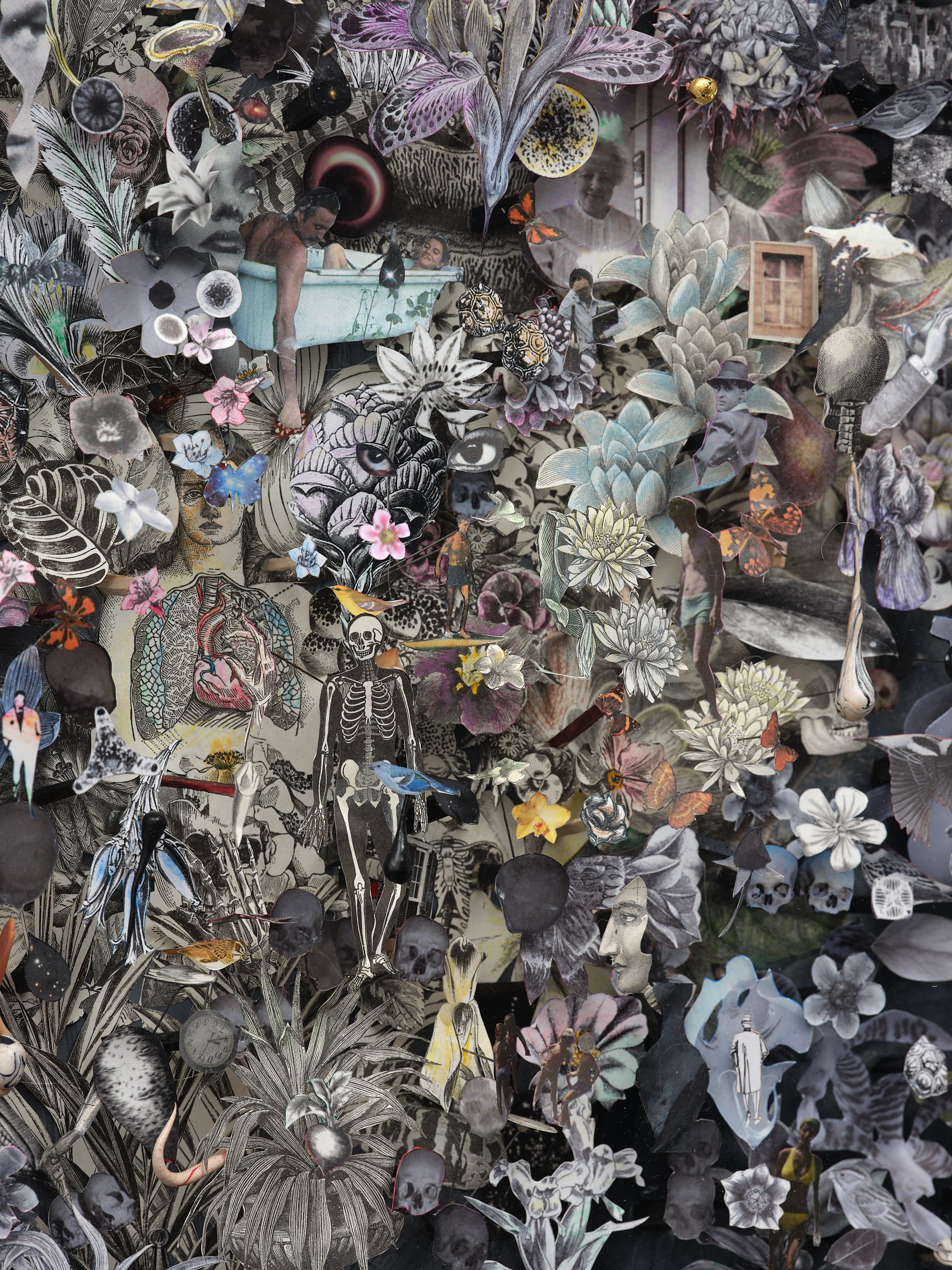
Peter Madden
All our yesterdays (detail)
2022
inkjet photo collage and paint on wood
835 x 635mm

Peter Madden
Self Portrait as a clinamen
2022
inkjet photo collage and paint on wood
835 x 635mm

Peter Madden
Self Portrait as a clinamen (detail)
2022
inkjet photo collage and paint on wood
835 x 635mm

Apulian red-figure lekanis from Darius-Underworld Workshop
Late Classical period, ca. 320 B.C.
Provenance: E.F. Collection, Germany.
Apulian red-figure lekanis with decoration on the lid of palmettes, and two women’s heads wearing sakkos (a kind of head covering). A lekanis was a flat covered dish with handles, that were apparently filled with food and gifts to be given to brides.
The Darius Painter and his successor, the Underworld Painter, were the most prominent of the Apulian red-figure vase painters. These painters are thought to have worked out of the same workshop, which produced a prolific number of vases in this style.

Apulian red-figure lekanis from Darius-Underworld Workshop
Late Classical period, ca. 320 B.C.
Provenance: E.F. Collection, Germany.
Apulian red-figure lekanis with decoration on the lid of palmettes, and two women’s heads wearing sakkos (a kind of head covering). A lekanis was a flat covered dish with handles, that were apparently filled with food and gifts to be given to brides.
The Darius Painter and his successor, the Underworld Painter, were the most prominent of the Apulian red-figure vase painters. These painters are thought to have worked out of the same workshop, which produced a prolific number of vases in this style.

Apulian vase of Gnathian ware
Late 4th century B.C.
Provenance: Private collection, Germany.
Apulian vase of Gnathian ware. Black-glazed pottery with incised lines and painting in white and yellow. Decorated with the head of a woman wearing a sakkos (a type of head covering), in between tendrils and flowers.
Gnathian ware was one of the most widespread types of Hellenistic ware, typically characterised by yellow, red and white decorations overlaid on a black surface. This type of ceramic takes its name from Gnathia, an ancient Greek colony located in what is now modern day Eganzia, south-east Italy, where much of this ceramic type was discovered.

Apulian vase of Gnathian ware
Late 4th century B.C.
Provenance: Private collection, Germany.
Apulian vase of Gnathian ware. Black-glazed pottery with incised lines and painting in white and yellow. Decorated with the head of a woman wearing a sakkos (a type of head covering), in between tendrils and flowers. Gnathian ware was one of the most widespread types of Hellenistic ware, typically characterised by yellow, red and white decorations overlaid on a black surface. This type of ceramic takes its name from Gnathia, an ancient Greek colony located in what is now modern day Eganzia, south-east Italy, where much of this ceramic type was discovered.
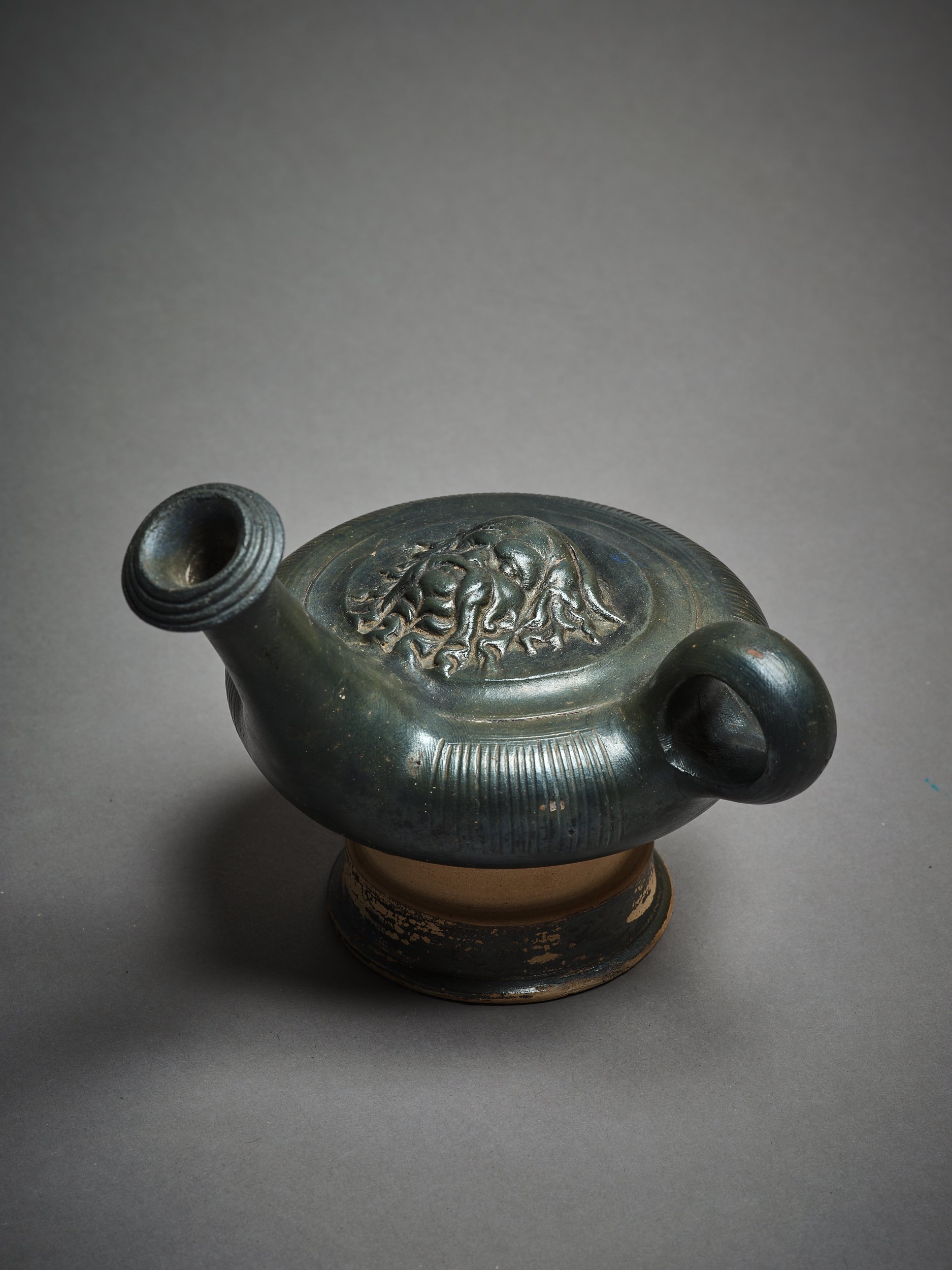
Campanian Black-Glazed Guttus
Hellenistic period, 2nd half of the 4th century BC, Western Greek, Campania
135 x 150 x 115mm
Provenance: L.J. collection, Netherlands; Private collection, USA. Campanian black-glazed guttus made from toned clay with ribbed body and ring handle. Decorated with moulded medallion of a satyr head with goat horns. Satyrs were part of the Thiasus, or entourage of the god Dionysus. The surface is partially rubbed, but the guttus is otherwise intact. Western Greek is a term which refers to objects produced in Greek colonies in Southern Italy. These small vessels were used to slowly pour liquid in drops — probably in the context of religious rituals such as sacrifices.

Campanian Black-Glazed Guttus
Hellenistic period, 2nd half of the 4th century BC, Western Greek, Campania
135 x 150 x 115mm
Provenance: L.J. collection, Netherlands; Private collection, USA.
Campanian black-glazed guttus made from toned clay with ribbed body and ring handle. Decorated with moulded medallion of a satyr head with goat horns. Satyrs were part of the Thiasus, or entourage of the god Dionysus. The surface is partially rubbed, but the guttus is otherwise intact. Western Greek is a term which refers to objects produced in Greek colonies in Southern Italy. These small vessels were used to slowly pour liquid in drops — probably in the context of religious rituals such as sacrifices.
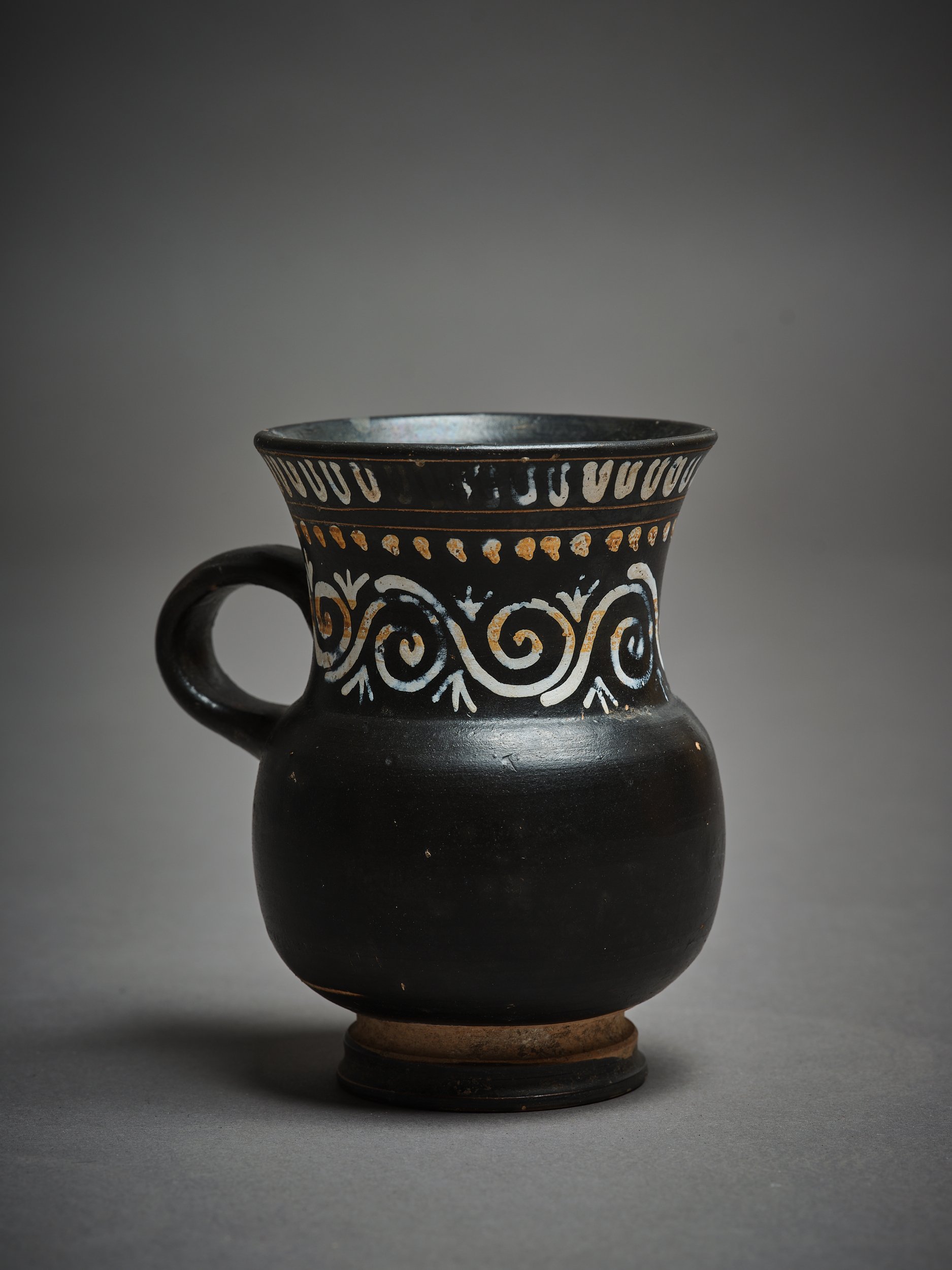
Apulian vase of Gnathian ware
Late 4th century B.C.
Provenance: Private collection, Germany.
Apulian vase of Gnathian ware. Black-glazed pottery with incised lines and painting in white and yellow. Decorated with a band of tendrils.
Gnathian ware was one of the most widespread types of Hellenistic ware, typically characterised by yellow, red and white decorations overlaid on a black surface. This type of ceramic takes its name from Gnathia, an ancient Greek colony located in what is now modern day Eganzia, south-east Italy, where much of this ceramic type was discovered.

Apulian vase of Gnathian ware
Late 4th century B.C.
Provenance: Private collection, Germany.
Apulian vase of Gnathian ware. Black-glazed pottery with incised lines and painting in white and yellow. Decorated with the head of a woman wearing a sakkos (a type of head covering), in between tendrils and flowers. Gnathian ware was one of the most widespread types of Hellenistic ware, typically characterised by yellow, red and white decorations overlaid on a black surface. This type of ceramic takes its name from Gnathia, an ancient Greek colony located in what is now modern day Eganzia, south-east Italy, where much of this ceramic type was discovered.

Three miniature olpai of Gnathian ware
Magna Graecia, 4th - 3rd century B.C.
Provenance: Private collection, Germany.
An olpe was a vessel type used either as a wine jug or oil jug. Gnathian ware was one of the most widespread types of Hellenistic ware, typically characterised by yellow, red and white decorations overlaid on a black surface. This type of ceramic takes its name from Gnathia, an ancient Greek colony located in what is now modern day Eganzia, south-east Italy, where much of this ceramic type was discovered.

Three miniature olpai of Gnathian ware
Magna Graecia, 4th - 3rd century B.C.
Provenance: Private collection, Germany.
An olpe was a vessel type used either as a wine jug or oil jug. Gnathian ware was one of the most widespread types of Hellenistic ware, typically characterised by yellow, red and white decorations overlaid on a black surface. This type of ceramic takes its name from Gnathia, an ancient Greek colony located in what is now modern day Eganzia, south-east Italy, where much of this ceramic type was discovered.






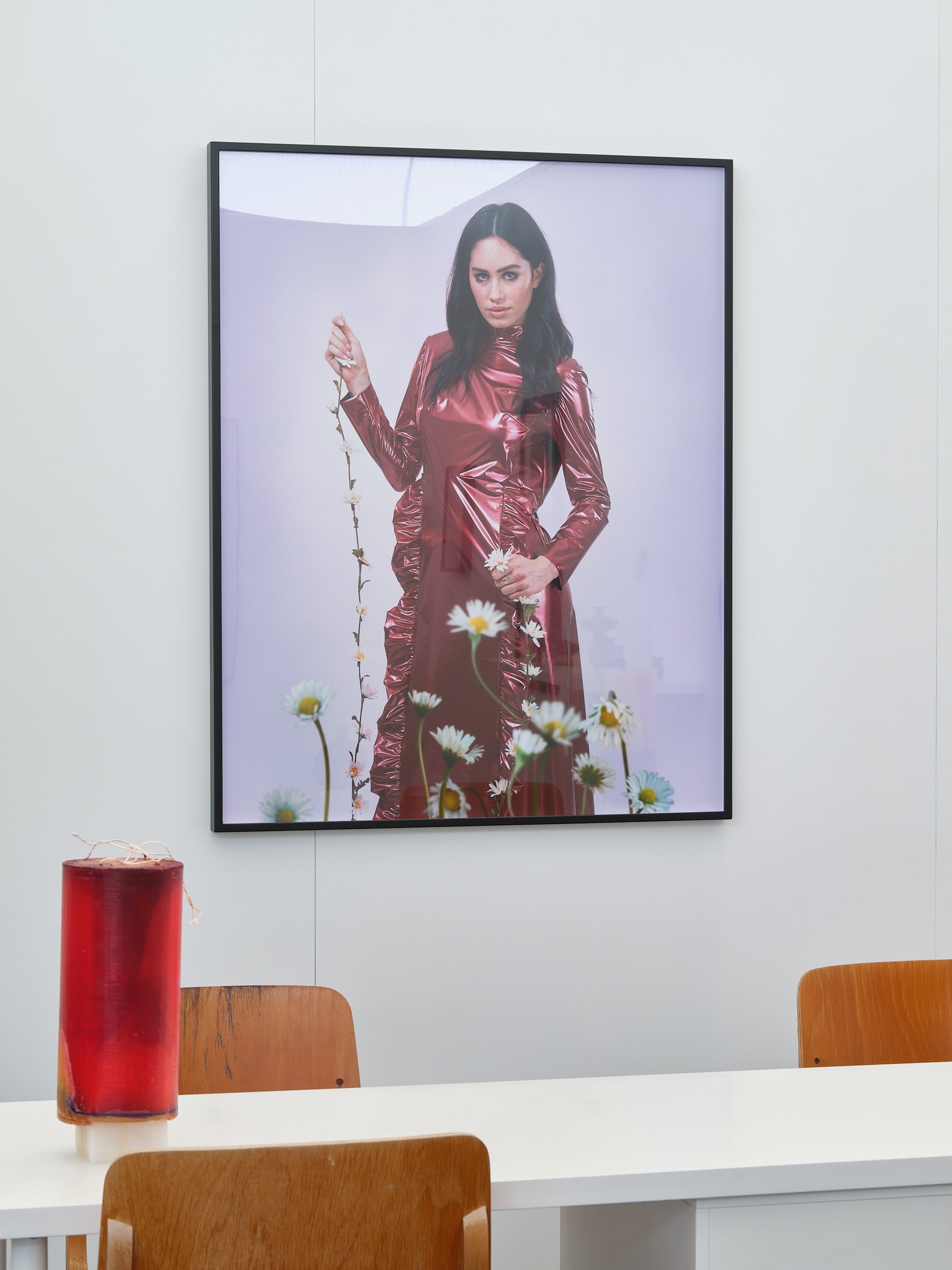
Yvonne Todd, Kushana Bush, John Ward Knox, Peter Madden, candles by Rohan Wealleans, and Greek antiquities
Aotearoa Art Fair 2022
16 November - 20 November
Yvonne Todd
Juniper
2022
C-type print from 4x5 transparency film
1200 x 950 mm
Edition of 3 + 2 artist proofs
Yvonne Todd
Petronella
2022
C-type print from 4x5 transparency film
1200 x 950mm
Edition of 3 + 2 artist proofs
Yvonne Todd
Smoke Soap Hand
2001
C-type print from 120 transparency film
440 x 355mm
Edition of 3 + 2 artist proofs
Yvonne Todd
Sparse flower draped with chain
1999
C-type print from 120 transparency film
440 x 355mm
Edition of 3 + 2 artist proofs
Kushana Bush
Alalagmos
2022
Gouache and watercolour on paper
510 x 590mm (framed)
Kushana Bush
Alalagmos
2022
Gouache and watercolour on paper
510 x 590mm (framed)
Kushana Bush
Geriatric Primate
2022
Gouache and watercolour on paper
510 x 590mm (framed)
Kushana Bush
Geriatric Primate
2022
Gouache and watercolour on paper
510 x 590mm (framed)
Kushana Bush
Yogibogey
2022
Gouache and watercolour on paper
510 x 590mm (framed)
Kushana Bush
Yogibogey
2022
Gouache and watercolour on paper
510 x 590mm (framed)
Kushana Bush
Gorgoneion Swaddle
2022
Gouache and watercolour on paper
510 x 590 (framed)
Kushana Bush
Gorgoneion Swaddle
2022
Gouache and watercolour on paper
510 x 590 (framed)
John Ward Knox
No title (iv)
2022
oil and calico and silk
500 x 500mm
John Ward Knox
No title (iv) (detail)
2022
oil and calico and silk
500 x 500mm
John Ward Knox
No title (v)
2022
oil and calico and silk
500 x 500mm
John Ward Knox
No title (v) (detail)
2022
oil and calico and silk
500 x 500mm
John Ward Knox
No title (vi)
2022
oil and calico and silk
500 x 500mm
John Ward Knox
No title (vi) (detail)
2022
oil and calico and silk
500 x 500mm
John Ward Knox
No title (ix)
2022
oil and calico and silk
500 x 500mm
John Ward Knox
No title (ix) (detail)
2022
oil and calico and silk
500 x 500mm
Peter Madden
All our yesterdays
2022
inkjet photo collage and paint on wood
835 x 635mm
Peter Madden
All our yesterdays (detail)
2022
inkjet photo collage and paint on wood
835 x 635mm
Peter Madden
Self Portrait as a clinamen
2022
inkjet photo collage and paint on wood
835 x 635mm
Peter Madden
Self Portrait as a clinamen (detail)
2022
inkjet photo collage and paint on wood
835 x 635mm
Apulian red-figure lekanis from Darius-Underworld Workshop
Late Classical period, ca. 320 B.C.
Provenance: E.F. Collection, Germany.
Apulian red-figure lekanis with decoration on the lid of palmettes, and two women’s heads wearing sakkos (a kind of head covering). A lekanis was a flat covered dish with handles, that were apparently filled with food and gifts to be given to brides.
The Darius Painter and his successor, the Underworld Painter, were the most prominent of the Apulian red-figure vase painters. These painters are thought to have worked out of the same workshop, which produced a prolific number of vases in this style.
Apulian red-figure lekanis from Darius-Underworld Workshop
Late Classical period, ca. 320 B.C.
Provenance: E.F. Collection, Germany.
Apulian red-figure lekanis with decoration on the lid of palmettes, and two women’s heads wearing sakkos (a kind of head covering). A lekanis was a flat covered dish with handles, that were apparently filled with food and gifts to be given to brides.
The Darius Painter and his successor, the Underworld Painter, were the most prominent of the Apulian red-figure vase painters. These painters are thought to have worked out of the same workshop, which produced a prolific number of vases in this style.
Apulian vase of Gnathian ware
Late 4th century B.C.
Provenance: Private collection, Germany.
Apulian vase of Gnathian ware. Black-glazed pottery with incised lines and painting in white and yellow. Decorated with the head of a woman wearing a sakkos (a type of head covering), in between tendrils and flowers.
Gnathian ware was one of the most widespread types of Hellenistic ware, typically characterised by yellow, red and white decorations overlaid on a black surface. This type of ceramic takes its name from Gnathia, an ancient Greek colony located in what is now modern day Eganzia, south-east Italy, where much of this ceramic type was discovered.
Apulian vase of Gnathian ware
Late 4th century B.C.
Provenance: Private collection, Germany.
Apulian vase of Gnathian ware. Black-glazed pottery with incised lines and painting in white and yellow. Decorated with the head of a woman wearing a sakkos (a type of head covering), in between tendrils and flowers. Gnathian ware was one of the most widespread types of Hellenistic ware, typically characterised by yellow, red and white decorations overlaid on a black surface. This type of ceramic takes its name from Gnathia, an ancient Greek colony located in what is now modern day Eganzia, south-east Italy, where much of this ceramic type was discovered.
Campanian Black-Glazed Guttus
Hellenistic period, 2nd half of the 4th century BC, Western Greek, Campania
135 x 150 x 115mm
Provenance: L.J. collection, Netherlands; Private collection, USA. Campanian black-glazed guttus made from toned clay with ribbed body and ring handle. Decorated with moulded medallion of a satyr head with goat horns. Satyrs were part of the Thiasus, or entourage of the god Dionysus. The surface is partially rubbed, but the guttus is otherwise intact. Western Greek is a term which refers to objects produced in Greek colonies in Southern Italy. These small vessels were used to slowly pour liquid in drops — probably in the context of religious rituals such as sacrifices.
Campanian Black-Glazed Guttus
Hellenistic period, 2nd half of the 4th century BC, Western Greek, Campania
135 x 150 x 115mm
Provenance: L.J. collection, Netherlands; Private collection, USA.
Campanian black-glazed guttus made from toned clay with ribbed body and ring handle. Decorated with moulded medallion of a satyr head with goat horns. Satyrs were part of the Thiasus, or entourage of the god Dionysus. The surface is partially rubbed, but the guttus is otherwise intact. Western Greek is a term which refers to objects produced in Greek colonies in Southern Italy. These small vessels were used to slowly pour liquid in drops — probably in the context of religious rituals such as sacrifices.
Apulian vase of Gnathian ware
Late 4th century B.C.
Provenance: Private collection, Germany.
Apulian vase of Gnathian ware. Black-glazed pottery with incised lines and painting in white and yellow. Decorated with a band of tendrils.
Gnathian ware was one of the most widespread types of Hellenistic ware, typically characterised by yellow, red and white decorations overlaid on a black surface. This type of ceramic takes its name from Gnathia, an ancient Greek colony located in what is now modern day Eganzia, south-east Italy, where much of this ceramic type was discovered.
Apulian vase of Gnathian ware
Late 4th century B.C.
Provenance: Private collection, Germany.
Apulian vase of Gnathian ware. Black-glazed pottery with incised lines and painting in white and yellow. Decorated with the head of a woman wearing a sakkos (a type of head covering), in between tendrils and flowers. Gnathian ware was one of the most widespread types of Hellenistic ware, typically characterised by yellow, red and white decorations overlaid on a black surface. This type of ceramic takes its name from Gnathia, an ancient Greek colony located in what is now modern day Eganzia, south-east Italy, where much of this ceramic type was discovered.
Three miniature olpai of Gnathian ware
Magna Graecia, 4th - 3rd century B.C.
Provenance: Private collection, Germany.
An olpe was a vessel type used either as a wine jug or oil jug. Gnathian ware was one of the most widespread types of Hellenistic ware, typically characterised by yellow, red and white decorations overlaid on a black surface. This type of ceramic takes its name from Gnathia, an ancient Greek colony located in what is now modern day Eganzia, south-east Italy, where much of this ceramic type was discovered.
Three miniature olpai of Gnathian ware
Magna Graecia, 4th - 3rd century B.C.
Provenance: Private collection, Germany.
An olpe was a vessel type used either as a wine jug or oil jug. Gnathian ware was one of the most widespread types of Hellenistic ware, typically characterised by yellow, red and white decorations overlaid on a black surface. This type of ceramic takes its name from Gnathia, an ancient Greek colony located in what is now modern day Eganzia, south-east Italy, where much of this ceramic type was discovered.









































